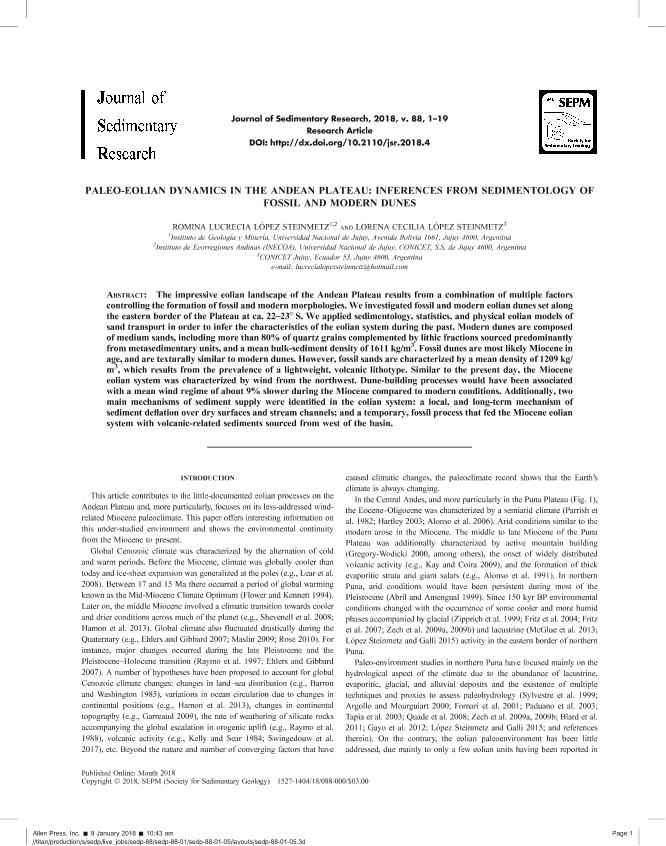Artículo
Paleo-eolian dynamics in the andean plateau: Inferences from sedimentology of fossil and modern dunes
Fecha de publicación:
01/2018
Editorial:
Society for Sedimentary Geology
Revista:
Journal of Sedimentary Research - (Print)
ISSN:
1527-1404
Idioma:
Inglés
Tipo de recurso:
Artículo publicado
Clasificación temática:
Resumen
The impressive eolian landscape of the Andean Plateau results from a combination of multiple factors controlling the formation of fossil and modern morphologies. We investigated fossil and modern eolian dunes set along the eastern border of the Plateau at ca. 22–238 S. We applied sedimentology, statistics, and physical eolian models of sand transport in order to infer the characteristics of the eolian system during the past. Modern dunes are composed of medium sands, including more than 80% of quartz grains complemented by lithic fractions sourced predominantly from metasedimentary units, and a mean bulk-sediment density of 1611 kg/m3. Fossil dunes are most likely Miocene in age, and are texturally similar to modern dunes. However, fossil sands are characterized by a mean density of 1209 kg/ m3, which results from the prevalence of a lightweight, volcanic lithotype. Similar to the present day, the Miocene eolian system was characterized by wind from the northwest. Dune-building processes would have been associated with a mean wind regime of about 9% slower during the Miocene compared to modern conditions. Additionally, two main mechanisms of sediment supply were identified in the eolian system: a local, and long-term mechanism of sediment deflation over dry surfaces and stream channels; and a temporary, fossil process that fed the Miocene eolian system with volcanic-related sediments sourced from west of the basin.
Palabras clave:
paleo climate
,
aridity
,
wind
,
Miocene
,
Central Andes
Archivos asociados
Licencia
Identificadores
Colecciones
Articulos(INECOA)
Articulos de INSTITUTO DE ECORREGIONES ANDINAS
Articulos de INSTITUTO DE ECORREGIONES ANDINAS
Citación
López Steinmetz, Romina Lucrecia; López Steinmetz, Lorena Cecilia; Paleo-eolian dynamics in the andean plateau: Inferences from sedimentology of fossil and modern dunes; Society for Sedimentary Geology; Journal of Sedimentary Research - (Print); 88; 1; 1-2018; 129-147
Compartir
Altmétricas




